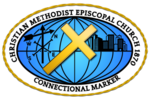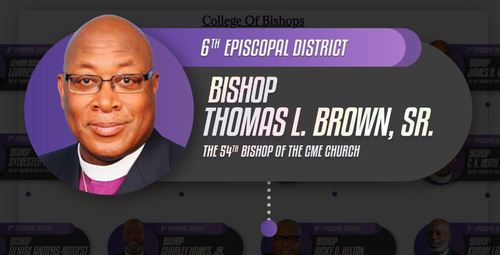History, Beliefs, and Symbols of Our Church
Williams Chapel C.M.E. Church's Profile
Williams Chapel Christian Methodist Episcopal Church
Founded: 1880 Theme: “A Past to Remember and a Future to Fulfill”
Denomination: Christian Methodist Episcopal (CME)
Our Beliefs: Rooted in the Articles of Religion, General Rules, Social Creed, and Canons of the CME Church, we affirm our faith in the Holy Trinity—Father, Son, and Holy Ghost. Membership is open to all who desire to flee from sin and embrace salvation through Jesus Christ. Our worship includes the recitation of The Affirmation of Faith (The Apostles’ Creed), and we are guided both spiritually and legally by The Book of Discipline.
Active Membership: 180 devoted members and growing
Annual Observances:
-
Women’s Day
-
Men’s Day
-
Church Anniversary
-
Homecoming & Revival
-
Sunday Church School Anniversary
-
Senior Honors Service
A Legacy of Faith and Service:
-
The original church was built approximately ¾ mile west of Jeffersonville on Hwy. 96, known locally as “Over the Branch” on Tarversville Road.
-
Williams Chapel is honored to be the Mother Church of Shiloh CME Church.
-
Pastors are appointed annually by the Presiding Bishop during the Annual Conference.
-
Church officers are nominated by the Pastor and confirmed in the Quarterly Conference.
-
Our church is committed to benevolence, offering support and care to both members and the wider community.
The Beginning of the C.M.E. Church
Our Connectional History: Rooted in Faith, Born from Freedom
The Colored Methodist Episcopal Church—now known as the CME Church—was born out of a sacred desire for freedom, dignity, and spiritual autonomy. As Methodism spread across the South, many Black believers, once enslaved and later emancipated, embraced the Methodist faith. Yet they longed for a church they could lead, shape, and call their own.
On December 16, 1870, forty-one visionary Black leaders gathered in Jackson, Tennessee. With guidance from white brethren of the Methodist Episcopal Church South, they organized the colored branch of Methodism. Just days later, they adopted the Book of Discipline and elected two bishops: William H. Miles of Kentucky and Richard H. Vanderhorst of Georgia. What began as a dream became a living church—planted by faith and destined to grow.
As Bishop Randall Albert Carter declared, “this tender plant of God” had taken root and “was here to live or die.” (Psalm 80)
Click the image below to learn more about the powerful history of our connectional church.
C.M.E. Logo, Methodist Beliefs, & Church Structure
The Official Logo of the Christian Methodist Episcopal Church
Authorized by Bishop B. Julian Smith for the Centennial General Conference in Memphis (1970) and officially adopted in 1974, the CME Church logo serves as a powerful connectional symbol of our denomination’s mission and identity.
Designed by Will E. Chambers, the logo reflects the Church’s place in a rapidly changing, urbanized world and its commitment to God’s people. Each element carries deep spiritual meaning:
-
🌍 The World Globe – Represents the vineyard of God, reminding us that the Church’s mission is global and inclusive.
-
🌆 The Skyline – Symbolizes the Church’s concern for human and urban challenges, and the spiritual alienation many face today.
-
🧭 The Weather Vane – Reflects the Church’s flexibility and responsiveness to the evolving needs of God’s people.
-
✝️ The Cross – The vertical bar calls us to a right relationship with God; the horizontal bar calls us to love one another. Together, the Cross proclaims our final victory through the blood of Jesus Christ.
This emblem is more than a design—it’s a declaration of purpose, presence, and promise.
Methodist Beliefs
Core Beliefs of the Methodist Tradition
The Christian Methodist Episcopal Church holds fast to foundational beliefs that shape our faith, worship, and daily walk with Christ. These principles reflect the heart of Methodism and its call to live a life of grace, service, and spiritual growth.
🌟 Christian Perfection Methodists believe that while a sinless life may never be fully attained, every believer is called to strive toward spiritual maturity and holiness. Progress in love, humility, and obedience is evidence of a life being perfected in Christ.
🌍 Universal Redemption: Jesus Christ died for all people. Salvation is available to everyone—regardless of status, background, or possessions. This inclusive grace affirms that no one is beyond the reach of God’s love.
✝️ Justification by Faith We are saved by faith in the saving grace of Jesus Christ—not by our works. Our service flows from faith, but it is grace alone that redeems us. This unearned love is the foundation of our salvation.
🔥 The Witness of the Holy Spirit. Every believer can experience the inner assurance of being a child of God. The Holy Spirit actively works in our lives and in the world, guiding us and building God’s Kingdom.
⚠️ Falling from Grace Methodists emphasize the real possibility that a believer can turn away from God’s grace. Faith must be nurtured and lived out—not taken for granted.
🕊️ The Sacraments We observe two sacred acts instituted by Christ:
-
Baptism – A sign of new life and entrance into the Christian community
-
The Lord’s Supper – A remembrance of Christ’s sacrifice and a celebration of His presence among us. Each sacrament is a visible sign of an inward and spiritual grace.
Church Governance: A Three-Branch Structure
The CME Church operates with a balanced and thoughtful structure, reflecting both spiritual leadership and organizational integrity:
-
📝 Legislative Branch – General Conference Sets church policy, doctrine, and direction.
-
👑 Executive Branch – Episcopacy (Bishops) Oversees the spiritual and administrative leadership of the church.
-
⚖️ Judicial Branch – Judicial Council Ensures due process and interprets The Book of Discipline. Established in 1950, the nine-member Council elected by the General Conference serves as the final authority on church law and governance.
Click the image below to meet our Connectional Church Leadership Team. Learn more about the dedicated leaders guiding our denomination with wisdom, faith, and vision.

